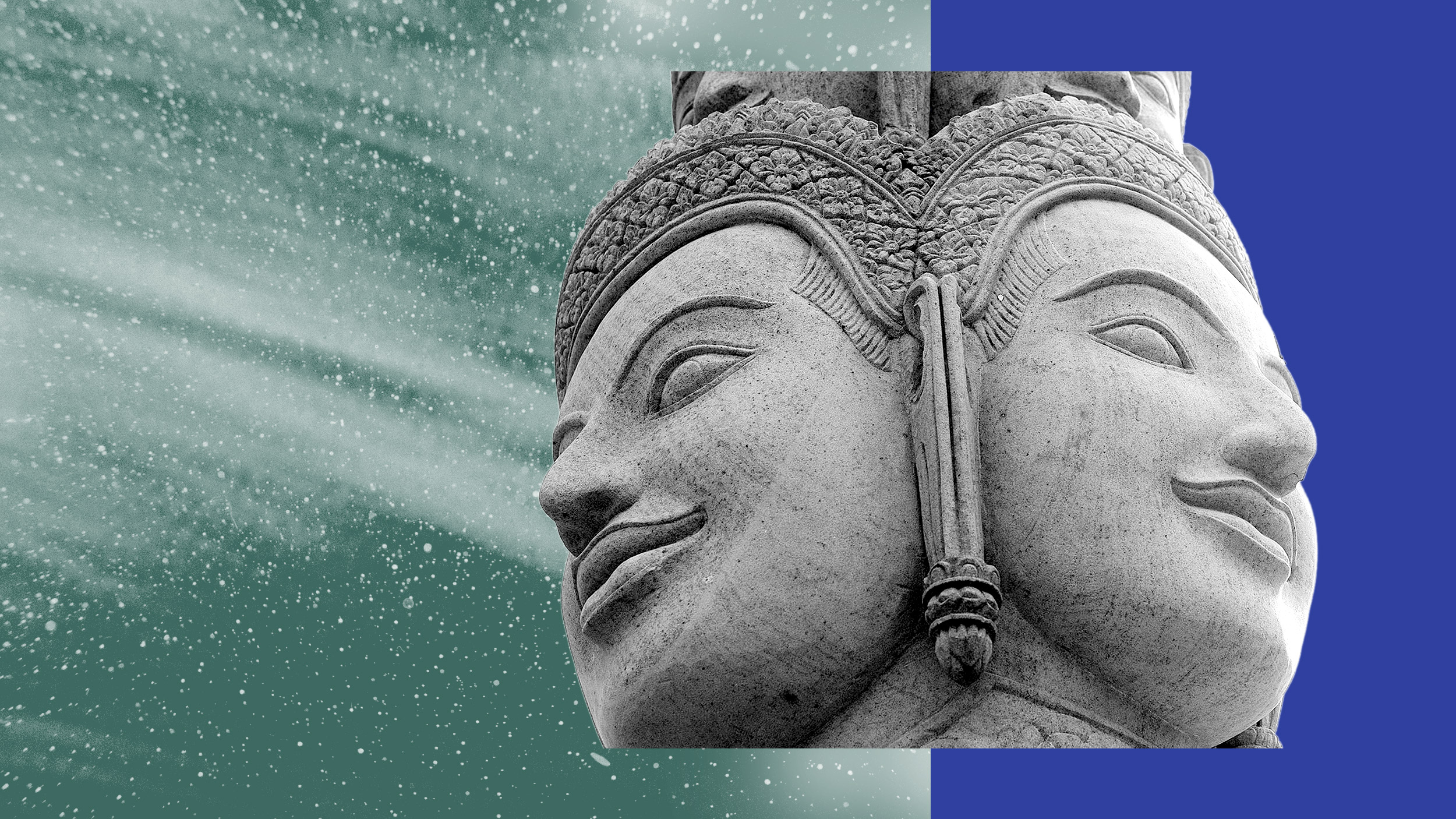We all get “monkey mind” — and neuroscience supports the Buddhist solution

- The “monkey mind” originates in Chinese folklore and describes that restless state of chaotic thoughts and emotions.
- Neuroscience has traced monkey mind to the brain regions known as the default mode network (DMN).
- Buddhist mindfulness has been shown to calm the DMN and reduce stress.
In the Dhammapada, the Buddha taught that, “we are shaped by our thoughts, and we become what we think.” This sentiment highlights the powerful influence that our thoughts have on shaping our experiences and our lives. According to Buddhist teachings, the mind either can be a friend or an enemy depending on our ability to control it.
Origins of “monkey mind”
Uncontrolled, the mind can become restless — prone to a state of cyclical thoughts and emotions. The Buddhist path involves cultivating mindfulness and developing practices aimed at reducing this mental agitation and promoting inner peace.
“Monkey mind” originated in an ancient Chinese folklore legend, and is retold in the classic novel Journey to the West (attributed to Ming Dynasty poet Wu Cheng’en). The main protagonist Sun Wukong, “The Monkey King,” is a rebellious trickster, inclined to mischief.
In the novel, Sun Wukong sets out on a journey to India in search of Buddhist scriptures and enlightenment. Along the way, he learns to control his monkey mind through meditation and self-reflection. He eventually becomes a faithful disciple of the Buddhist monk Tang Sanzang and gains spiritual freedom.
The story of Sun Wukong’s journey to enlightenment through meditation is an important cultural and spiritual insight in East Asian philosophy and Buddhism. Sun Wukong’s journey can be seen as a metaphor for the Buddhist path of spiritual development.

Why meditation?
Meditation is a mental practice that involves focusing one’s attention on an object, thought, sensation, or activity, to achieve mental clarity as well as emotional and physical calm. It can take various forms such as visualization or mindful awareness of emotions.
During meditation, thoughts and distractions will inevitably arise. The “work” of meditation involves repeatedly bringing focus back to the breath, bodily sensations, or a selected item (such as a mantra or a visual). The skill of returning attention to the object of your meditation, without judgment or frustration, is what builds mental strength.
One of the goals of meditation involves separating the self from one’s thoughts. When we meditate, we are attempting to observe our thoughts without getting caught up in them. This means that we can notice our thoughts as they arise and pass away, without getting attached to them. In cultivating a sense of balance and even-mindedness, we can learn to relate to our thoughts and emotions in a more objective way.
Through meditation, according to Buddhism, we also learn to see that our thoughts are constantly changing and impermanent. This means that we can let go of the belief that our thoughts define who we are, and instead see them as passing phenomena that come and go.
The neuroscience of meditation
Mindfulness meditation is one of the most important elements of the Buddha’s eight-fold path to enlightenment. According to ancient Buddhist teachings, attachment to thoughts, emotions, and desires is the source of all mental suffering. In recent years, neuroscience has found that many of these attachments originate in specific parts of the brain.
Several studies have investigated the beneficial effects of meditation on the brain. In 2010, psychologists identified a strong correlation between unhappiness and “mind-wandering.” They found that people who spend more time lost in thought or daydreaming reported higher levels of unhappiness, whereas those who focused on the present moment reported increased levels of happiness and satisfaction.
Fast forward to 2015, when a study revealed that meditation practices have a dulling effect on the default mode network (DMN). The DMN is a collection of brain regions that becomes active during mind-wandering, worry, and rumination: all hallmarks of the “monkey mind.” In a 2022 study from Scientific Reports, researchers found that mindfulness meditation increased communication between certain networks in the brain, including the DMN. The study concluded that meditation improves communication between different parts of the brain, which can lead to better overall brain function, improved cognitive control, and greater resilience to stress.
A stronger cortex
Another benefit of meditation is the strengthening of the prefrontal cortex: the part of the brain that is responsible for executive functions such as attention, decision-making, and self-control. A 2011 study found that participation in Mindfulness-Based Stress Reduction (MBSR) — a program that consists of mindfulness meditation and yoga — was associated with increases in gray matter concentration. The findings suggested that by improving cognitive function, mindfulness meditation can boost our ability to make rational decisions, leading to positive changes in psychological well-being.
Pre-dating those results, a 2005 study by NeuroReport found that long-term meditation practice is associated with increased cortical thickness in the brain regions that are involved in attention and emotional regulation. This can have a number of positive effects on overall well-being, and may impact age-related cortical decline.
Science and tradition
Overall, multiple studies have found that meditation results in improved brain function and structural changes to the brain. Although not all aspects of traditional practices can be easily measured or fully understood through scientific inquiry, these studies can begin to provide Western scientific backing to some of the claims made by traditional Eastern practices.





